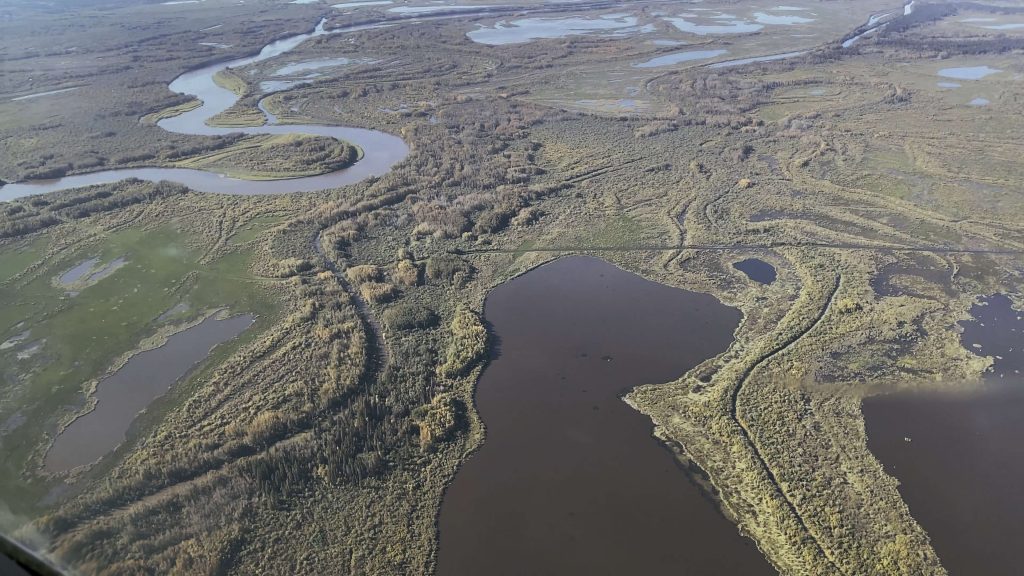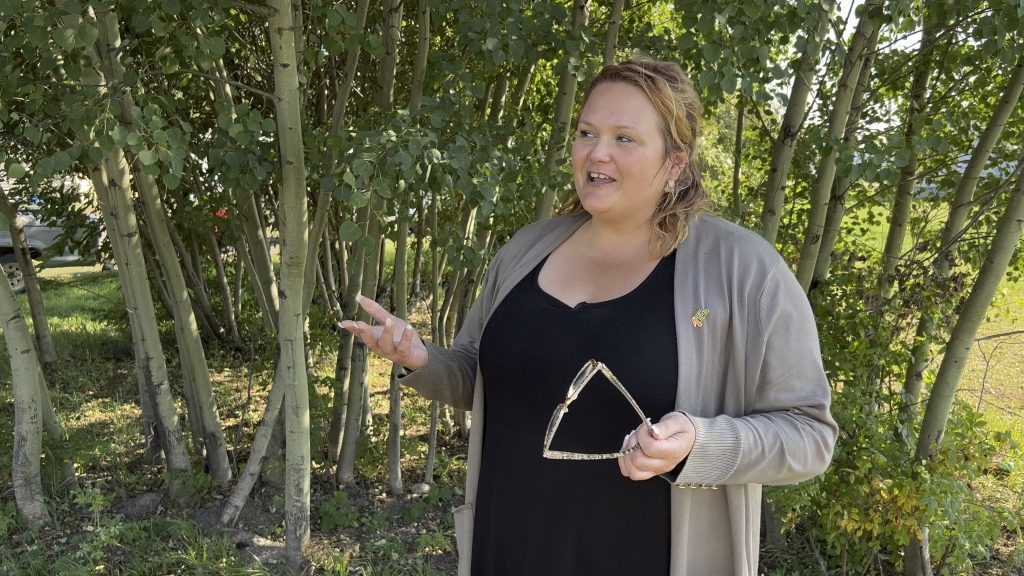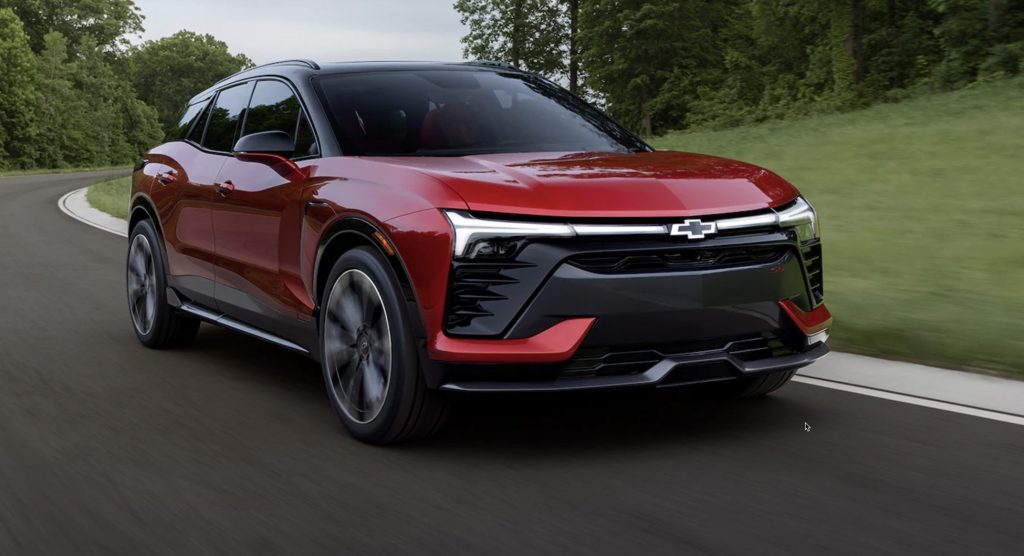By David Dodge, GreenEnergyFutures.ca
First the three nations of Fort Chipewyan formed Three Nations Energy and built one of the largest remote grid solar projects in Canada’s north.
Now there is a movement to bring electric vehicles to Fort Chipewyan, a fly-in community located on the shores of Lake Athabasca in northern Alberta.
You can get there by boat on the Athabasca River or by winter road for a few short months each winter, but it’s not easy.
Three Nations Energy (3NE) has been doing research into the viability of electric vehicles in Fort Chipewyan.
Parks Canada is interested. Blue Eyes Simpson is a member of the Fort Chipewyan Métis Nation and she works for Parks Canada.
“I think it’s going to be the way of the future,” she says adding that it’s important to reduce emissions and appropriate that Parks Canada pilot the idea.
“The climate is changing and we see it every day here” and “We need to be the forefront and we need to be right up beside our collaborative indigenous groups and any group that’s within the community that wants to push, solar or electric vehicles forward,” says Simpson.
For Parks Canada in Fort Chipewyan one of the key challenges is range.

Canada’s largest national park
“We live just about a kilometer or two outside of Wood Buffalo National Park” says Simpson. Her office is a field station that works in Wood Buffalo, the largest national park in Canada.
“People are very iffy about how good this is” says Simpson, but “I think it’s going to be good. There’s always pros and cons, but we will work through them because we all have the mindset of how can we be better Canadians…and…help with the emissions?” she says.
Simpson would like to see Parks Canada begin to use an EV around town in Fort Chipewyan as a pilot to get the know the strengths and limitations.
Many of the options 3NE looked at in its research had about half the range of their combustion counterparts and that range diminishes 30% and sometimes more in the winter.

Tammy Riel of the Métis Nation of Fort Chipewyan is keen to get involved. The Métis operate the VUE car rental business in town.
“We want to reduce emissions, reduce the maintenance costs of the fleet and reduce the cost of fuel as well,” she says.
To Riel range is not as big an issue.
“We are an isolated community and it’s a fly in community. Our range is pretty limited to begin with. I think the farthest you can drive is about 25 kilometres,” says Riel.
“You would have to do many laps around the community to run out of the energy you might need before you come back to fuel up.”
EVs in Fort Chipewyan – The ins and outs
Reduced cost of ownership and emissions
In their research 3NE estimates a new Ford F150 Lightning truck would cost 30% less to operate over its lifetime compared to one of Parks Canada’s existing 2015 F150s.
And surprisingly even using the diesel generated electricity from the local micro-grid the electric truck would produce 35% fewer emissions than the combustion engine vehicle. This is reduced dramatically if you charge using solar.


Winter driving
In research the range of EVs goes down up to 30% in the winter and it could be more in the cold winters of Fort Chipewyan. But this can be managed by prewarming the vehicle while it is plugged in. Cabin heating uses a lot of energy in the winter and prewarming it helps. Range in winter can vary by vehicle type and model as well.
One advantage is that an EV will always start in winter and most EVs have excellent traction control.
Power your home
This may require some special electrical work, but the Ford F150 Lightning and other EVs may be able to power your home or at least key appliances in the event of a black out for up to several days.
Range
The range of the EVs evaluated by 3NE typically was about half of their combustion engine counterparts. Range can be increased, but more batteries are expensive. So, for now an EV is probably not a great vehicle to drive down the winter road to Fort McMurray in the dead of winter. But for travel in and around town EVs may be just the thing to reduce the cost of ownership. This is why the Métis VUE car rental business is a perfect candidate, or any personal vehicle or fleet vehicle that will be used locally.


Cost and fuelling
Electric vehicles cost more upfront but they make up for it over time with much lower fuel and maintenance costs as described above. And of course, it takes just minutes to refuel a gas or diesel vehicle, and it can take over night to charge an EV from empty. However, on the upside you start everyday fully charged with an EV since all you need to do is plug it in to fill it up.
Charging
As of today there are no EVs in Fort Chip, but there is an EV charger and a second one will be installed soon. Calvin Waquan of the Mikisew Cree was awarded a Tesla Universal Charger by Indigenous Clean Energy at a recent event. It will be installed behind the multiplex near ACFN’s offices and Mikisew Cree Community Services.
Who will bring the first EV to Fort Chipewyan
Challenges aside, the thought of being the first to bring an EV to Fort Chipewyan brings a smile to Simpson’s face.
“As a community member, it would be just awesome. You know, really cool,” she says. “And I think even as a Parks Canada employee, I think it would be really nice to be able to have a vehicle that we can use just around town, just for now as a test pilot.”
Three Nations Energy has already helped reduce emissions in Fort Chipewyan by building a community owned 2.3-megawatt solar project that offsets 25% of the diesel generated electricity. Solar is not only emissions free, it’s also helping reduce the price of electricity across Alberta.
The community owned 3NE company also designed special solar systems that people from all nations use at their remote cabins out on the Peace Athabasca wilderness. In the past cabin owners would use only gas generators which requires them to haul expensive fuel from one to three hours across the water to their cabins in order to run lights and small fridges.
Now the gas generators provide back-up to their solar battery systems which have the added benefit of being silent.
Climate Change is very important to the indigenous peoples of the region. We have more forest fires, our water levels are changing, the Arctic ice is melting much quicker than anticipated and the ice is becoming much less predictable in the channels near Fort Chipewyan, says Simpson. This makes travel on the winter road and over the ice less reliable and dangerous at times.
“It’s important for us to know what’s happening with climate change and to look around and say ‘what can we do to make a difference?’” says Simpson.
“The solar farm and the electric vehicles are just a small way of helping out with climate change,” says Simpson.





